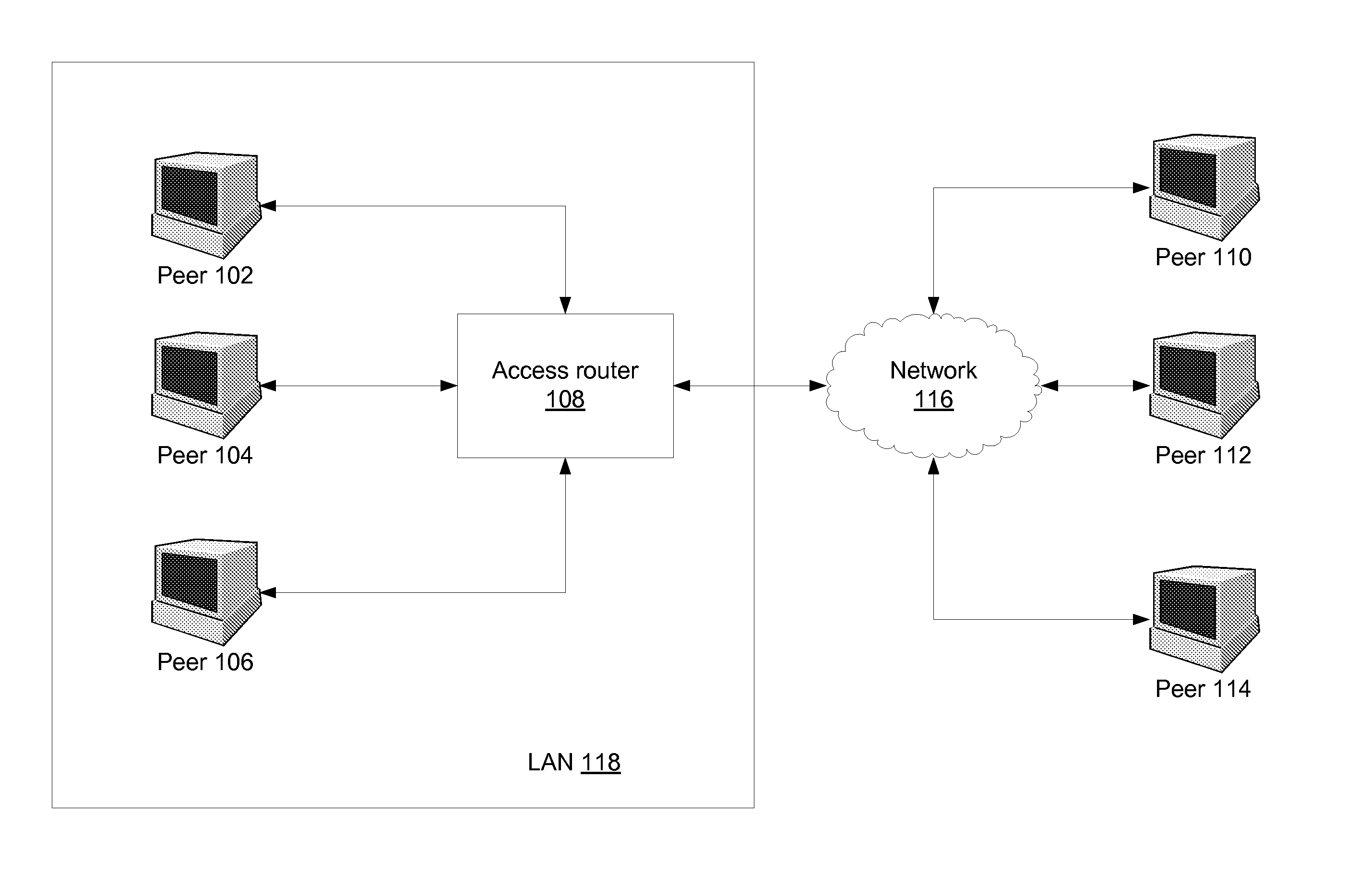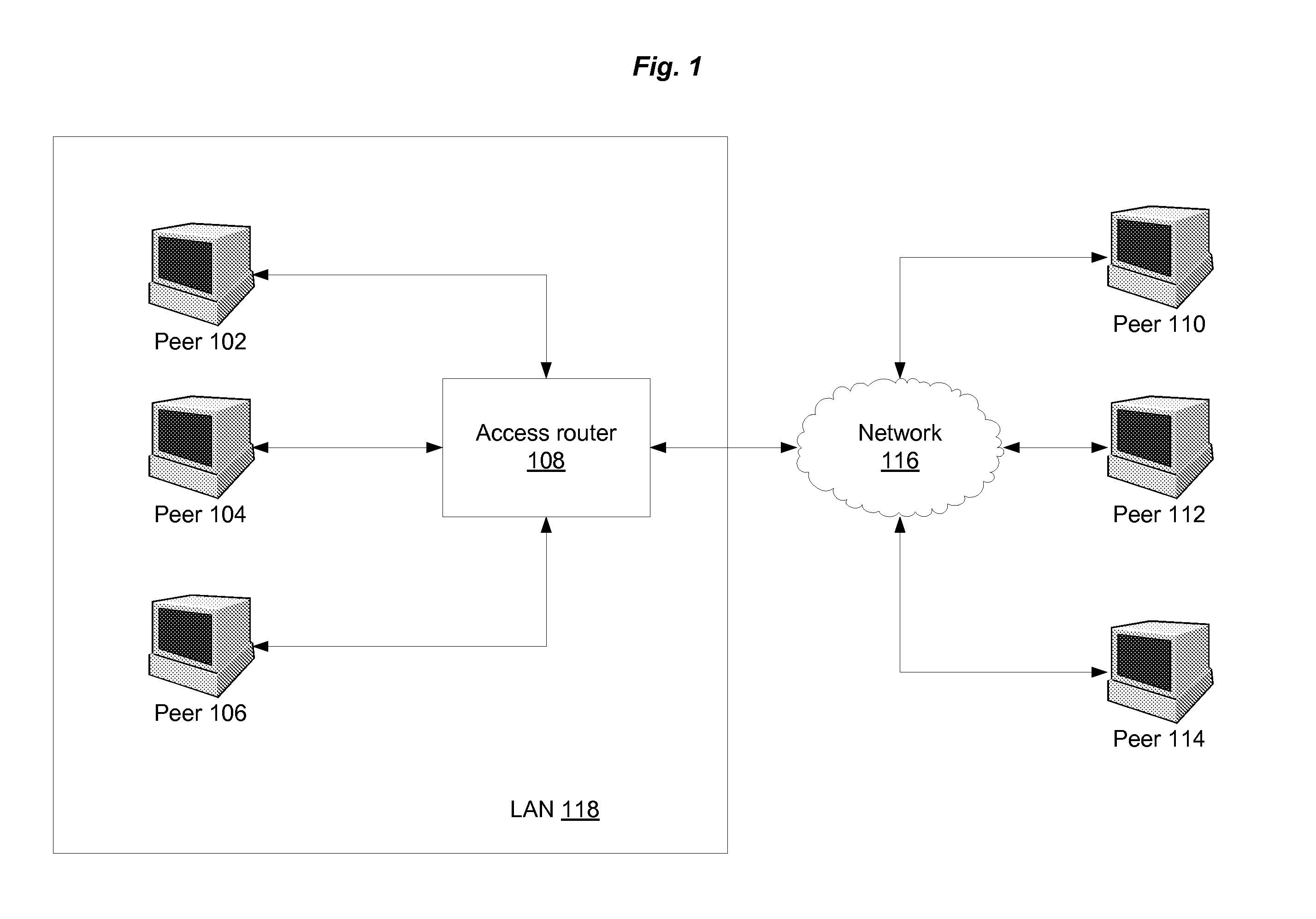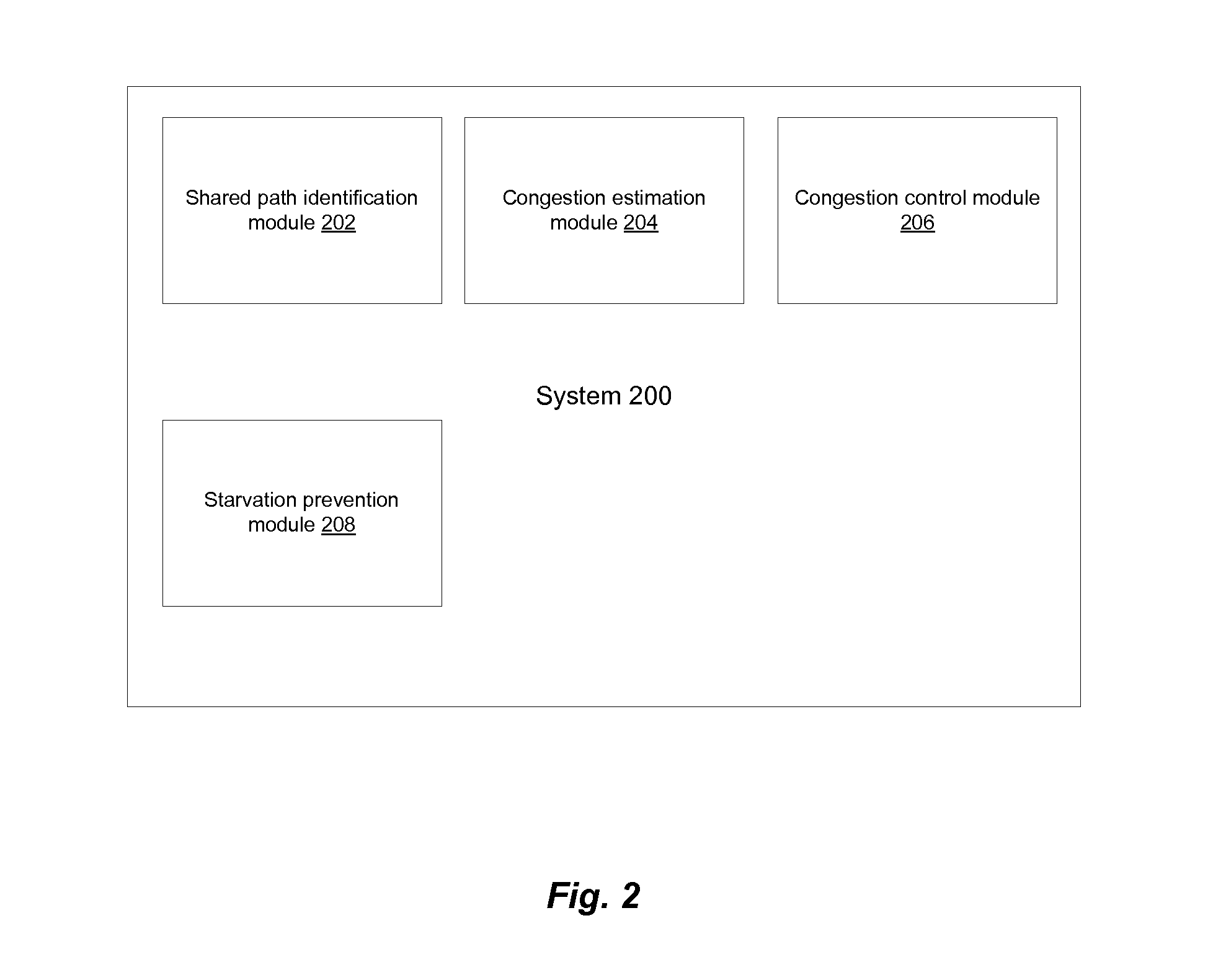End-system dynamic rate limiting of background traffic
a dynamic rate and background traffic technology, applied in data switching networks, frequency-division multiplexes, instruments, etc., can solve the problems of large file downloads, affecting the speed of downloads, and bullying other traffic on the network, so as to reduce congestion in the access network
- Summary
- Abstract
- Description
- Claims
- Application Information
AI Technical Summary
Benefits of technology
Problems solved by technology
Method used
Image
Examples
Embodiment Construction
[0014]FIG. 1 illustrates a context for the present invention. A network 116 such as the Internet connects remote peers 110, 112, 114 with a group of peers 102, 104, 106 on a local area network (LAN) 118. For example, peers 102, 104, 106 may be three computers in a single household, or three computers on a college campus, or three computers at a commercial location. Further, while three computers in the LAN and three remote peers are shown in FIG. 1, this is simply for purposes of illustration—an arbitrary number of peers may be involved in the peer-to-peer networking environment to which the present invention has application. Peers 102, 104, 106 communicate with network 116 via access router 108—for example, network traffic between peer 102 and peer 110 would travel through access router 108 (in addition to making several additional hops as is known in the art).
[0015] A system of the present invention in one embodiment is executed by a peer involved in peer-to-peer file sharing, as...
PUM
 Login to View More
Login to View More Abstract
Description
Claims
Application Information
 Login to View More
Login to View More - R&D
- Intellectual Property
- Life Sciences
- Materials
- Tech Scout
- Unparalleled Data Quality
- Higher Quality Content
- 60% Fewer Hallucinations
Browse by: Latest US Patents, China's latest patents, Technical Efficacy Thesaurus, Application Domain, Technology Topic, Popular Technical Reports.
© 2025 PatSnap. All rights reserved.Legal|Privacy policy|Modern Slavery Act Transparency Statement|Sitemap|About US| Contact US: help@patsnap.com



